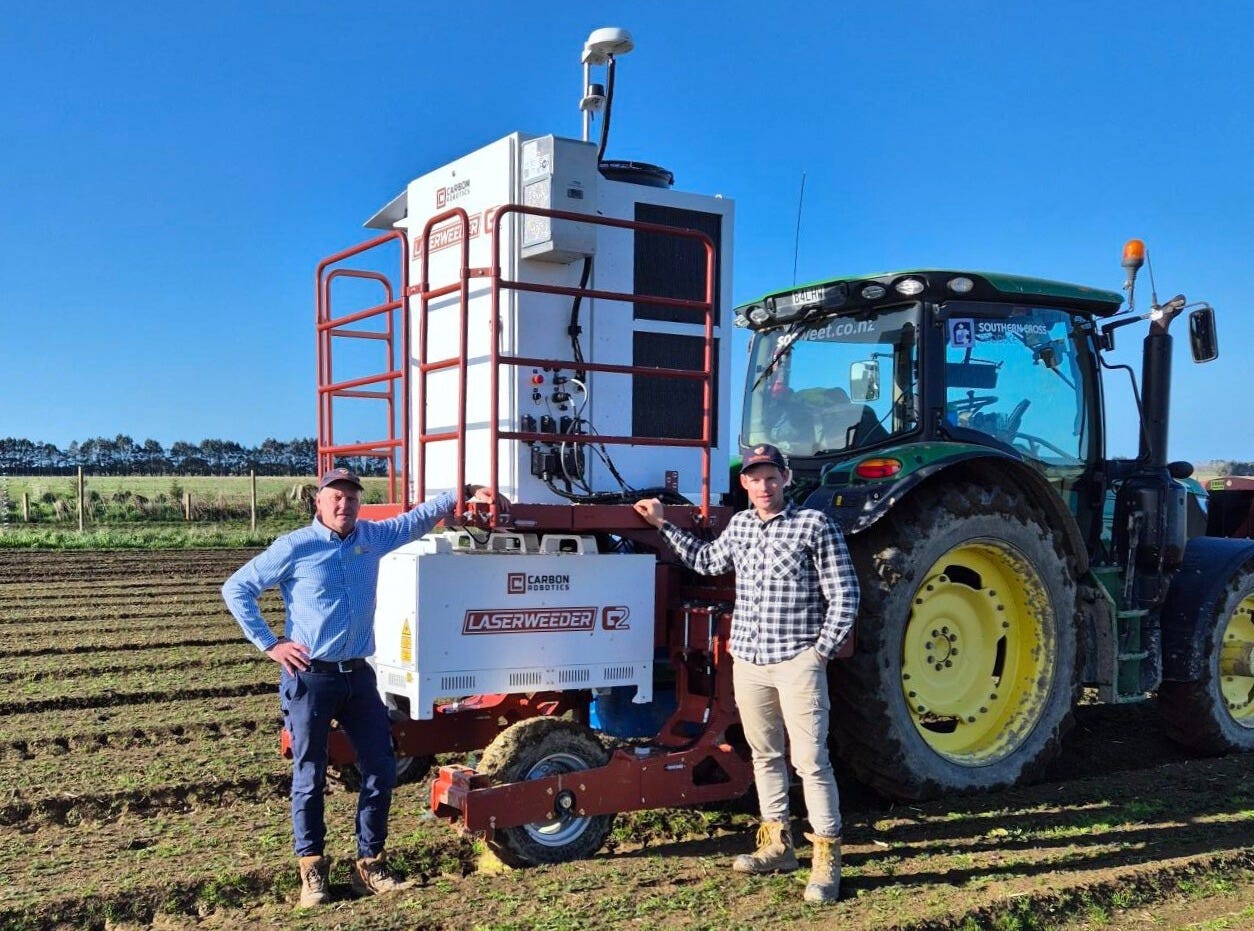The robotic weeder: Southland-based grower leads way
“This is more than just a machine. It reflects how we want to farm in the future."

Sign up to get each Tribune edition sent to your email inbox.
A Southland-based grower is embracing technology and is leading the way nationally in how it sorts the tedious task of weeding.
Vegetable grower So Sweet says it is the first grower in New Zealand to introduce the Carbon Robotics G2-200 laser weeder – “a groundbreaking step forward in sustainable farming”.
This technology uses high-resolution cameras, artificial intelligence, and laser accuracy to detect and remove weeds without disturbing the soil or crops.
It is said to be already making a tangible difference across So Sweet’s organic and conventional fields, with modelling suggesting the potential for up to an 80 percent reduction in herbicide use.
So Sweet Managing Director Matthew Malcolm said they have been farming for five generations, but have never believed in standing still.
“For us, this is about scaling sustainability while protecting our soil, our crops, and our people. It’s a proud moment to bring this technology to New Zealand.”
Matthew’s son Jesse is the Field Manager at So Sweet, and he is leading the day-to-day use of the new equipment.
For him, it’s an exciting opportunity to merge modern agri-tech with the knowledge and care passed down through generations.
“This is more than just a machine. It reflects how we want to farm in the future,” Jesse Malcolm said.
“We’ve spent years searching for better ways to grow, and this is a step we’re proud to take.”
So Sweet was originally known as Southern Cross Produce before rebranding. It has been growing carrots, parsnips, and seasonal vegetables for more than five generations.
Its success has been put down to Southland’s cool climate, long sunlight hours, and rich soils.
So Sweet believes these are the reasons the robotic laser wedding matters:
Scalable, sustainable growth for organic crops
Regenerative progress for conventional crops
More precise, efficient work that removes one of the most tedious jobs for the team
Modelling suggests the potential for up to an 80 percent reduction in herbicide use





